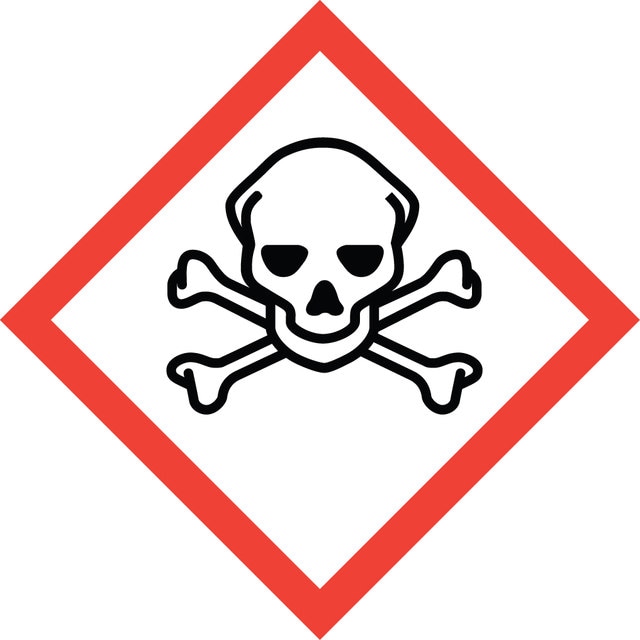Sign In to View Organizational & Contract Pricing
Select a Size
About This Item
Linear Formula:
BrC6H4SH
CAS Number:
Molecular Weight:
189.07
Beilstein:
2039769
EC Number:
MDL number:
UNSPSC Code:
12352100
PubChem Substance ID:
NACRES:
NA.22
Assay
97%
form
liquid
refractive index
n20/D 1.635 (lit.)
bp
128-130 °C/25 mmHg (lit.)
density
1.573 g/mL at 25 °C (lit.)
functional group
bromo
SMILES string
Sc1ccccc1Br
InChI
1S/C6H5BrS/c7-5-3-1-2-4-6(5)8/h1-4,8H
InChI key
YUQUNWNSQDULTI-UHFFFAOYSA-N
Looking for similar products? Visit Product Comparison Guide
General description
2-Bromothiophenol (2-Bromobenzenethiol) reacts with 4-(4-bromo-3-nitro-phenyl)morpholine to form nitro-sulphide.
Signal Word
Danger
Hazard Statements
Precautionary Statements
Hazard Classifications
Acute Tox. 3 Oral - Eye Irrit. 2 - Skin Irrit. 2 - STOT SE 3
Target Organs
Respiratory system
Storage Class Code
6.1C - Combustible acute toxic Cat.3 / toxic compounds or compounds which causing chronic effects
WGK
WGK 3
Flash Point(F)
>230.0 °F
Flash Point(C)
> 110 °C
Personal Protective Equipment
dust mask type N95 (US), Eyeshields, Gloves
Regulatory Information
新产品
This item has
Choose from one of the most recent versions:
Already Own This Product?
Find documentation for the products that you have recently purchased in the Document Library.
Phenothiazynes: preparation of 2-and 3-tertiary aminophenothiazines.
Jones DH.
Journal of the Chemical Society, 132-137 (1971)
Javier Campanini-Salinas et al.
Molecules (Basel, Switzerland), 23(7) (2018-07-22)
A rapid emergence of resistant bacteria is occurring worldwide, endangering the efficacy of antibiotics and reducing the therapeutic arsenal available for treatment of infectious diseases. In the present study, we developed a new class of compounds with antibacterial activity obtained
Homan Kang et al.
Scientific reports, 5, 10144-10144 (2015-05-29)
Recently, preparation and screening of compound libraries remain one of the most challenging tasks in drug discovery, biomarker detection, and biomolecular profiling processes. So far, several distinct encoding/decoding methods such as chemical encoding, graphical encoding, and optical encoding have been
Our team of scientists has experience in all areas of research including Life Science, Material Science, Chemical Synthesis, Chromatography, Analytical and many others.
Contact Technical Service